There are few things in life more overwhelming than a vintage furniture store. Every conceivable item in your field of vision is available for purchase, from the furniture and decor to the shelves displaying said decor, plus the artwork on the walls, the old magazines at the register, and the light fixtures illuminating the shop. A good vintage store can be difficult to comprehend, let alone actually shop.
But, as any seasoned vintage lover knows, you can find the absolute best one-of-a-kind furniture & decor gems with a little strategy, whether you frequent thrift stores, curated vintage boutiques, or estate sales. “There’s a bit of an art to vintage home decorating and shopping,” says Havenly lead designer Kelsey Fischer. “To find something you actually need and want, it’s important to create a game plan before you even step foot into a store.”
Ahead, Havenly’s resident vintage queen shares her complete guide to vintage furniture and decor shopping. Keep scrolling for Kelsey’s expert tips:
But first: What makes something "vintage"?

The general rule of thumb with furniture is that it must be at least 20 years old to quality as genuine “vintage.” “Even items around the 20 year mark are widely circulated and easy to find, so I like to look for pieces a bit older than that,” notes Kelsey. You start to move into antiques when items are 100 years old and up — those pieces are more scarce and therefore more valuable.
1. Where to look
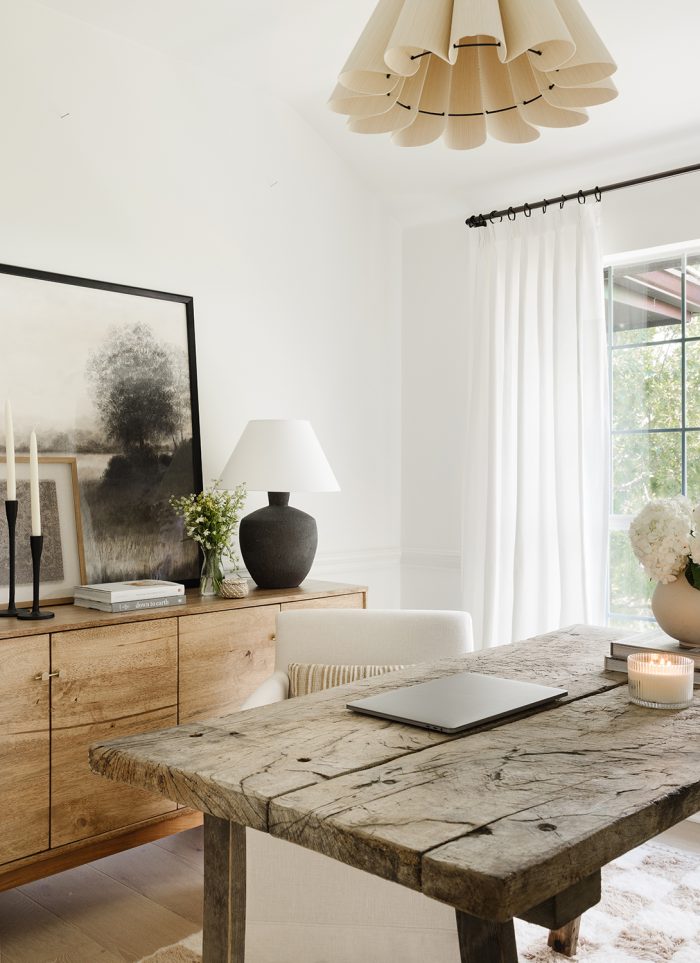
First things first: it’s important to hit all your bases when it comes to vintage furniture shopping. While some of the best vintage scores can be found at under-the-radar places like dusty thrift shops and estate sales, you have a better chance of finding something of value at a curated vintage or antique store. Don’t forget to expand your search outside of brick and mortar — Facebook Marketplace, EBay, Etsy, Offer Up, Everything But The House, Chairish, and First Dibs are all great online resources to consider!
Disclaimer: Always take the necessary precautions when buying furniture online or doing an in-person furniture swap — meet in public locations, bring a friend, turn on your phone location, and don’t carry large amounts of cash on you!
2. Make a game plan
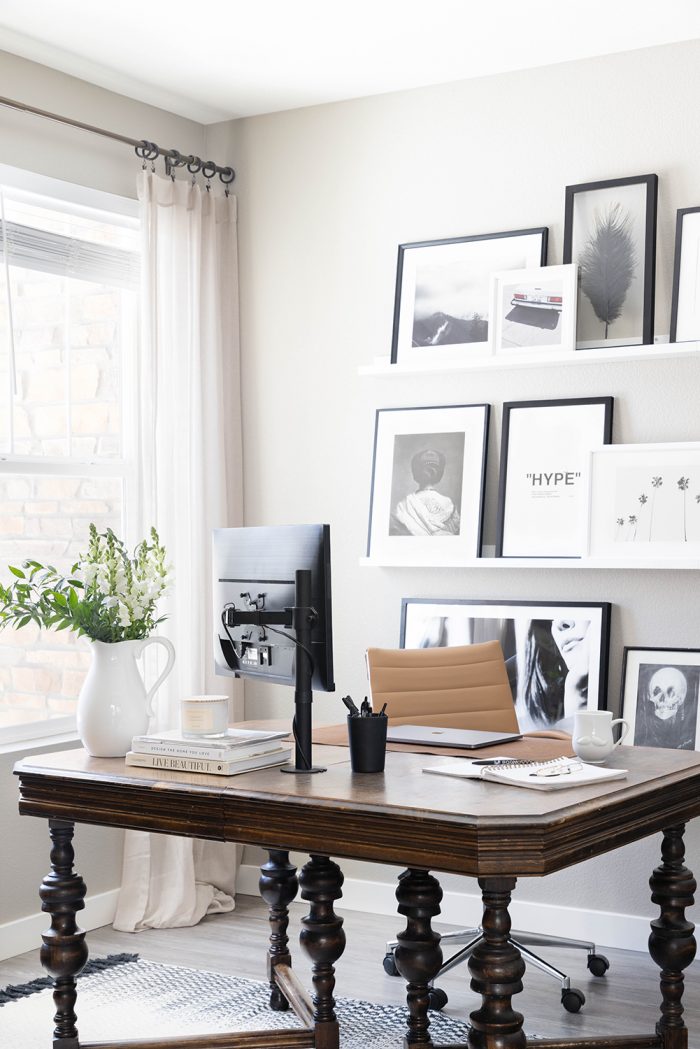
Before you start shopping vintage online or in-person, ask yourself a few important questions and formulate a game plan:
- What exactly are you looking for? Make a list and try to stick to it — it will keep you from buying items you don’t actually need. (It’s *very* easy to get sold on the idea that XYZ piece is one of a kind, even if you don’t have a place or need for it.)
- How far are you willing to drive, and do you have enough room in your vehicle to transport pieces home? Will you need to ask someone for moving help?
- Will a prospective piece need to be refinished, painted, or sanded, and do you have the physical space, budget, and tools to take on the project?
- When in doubt, ask yourself, “Is this side table great because I love it, or just because it’s vintage and affordable?”
- Will this piece fit in my space? Which brings us to…
3. Measure, measure, measure
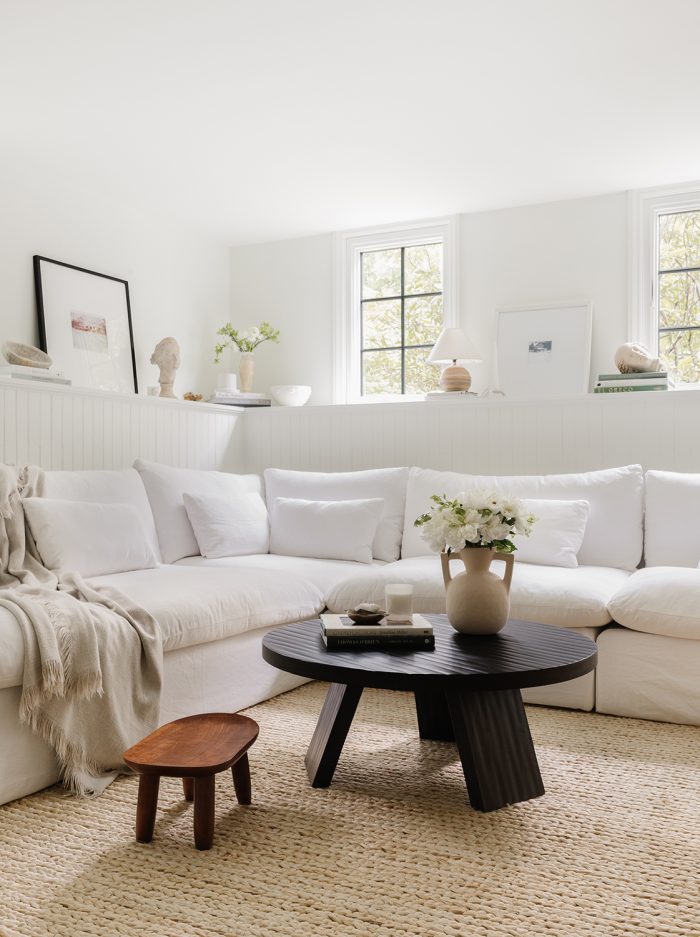
A trusty measuring tape is an absolute essential before, during, and after vintage furniture shopping. If you’re hunting for a specific piece, like a dresser, measure your space beforehand to get an idea of what will fit and jot everything down. If you find a piece you like, measure it in-store before heading to the register. Vintage stores often don’t accept returns, so this is step is vitally important!
4. What to look for (good and bad)
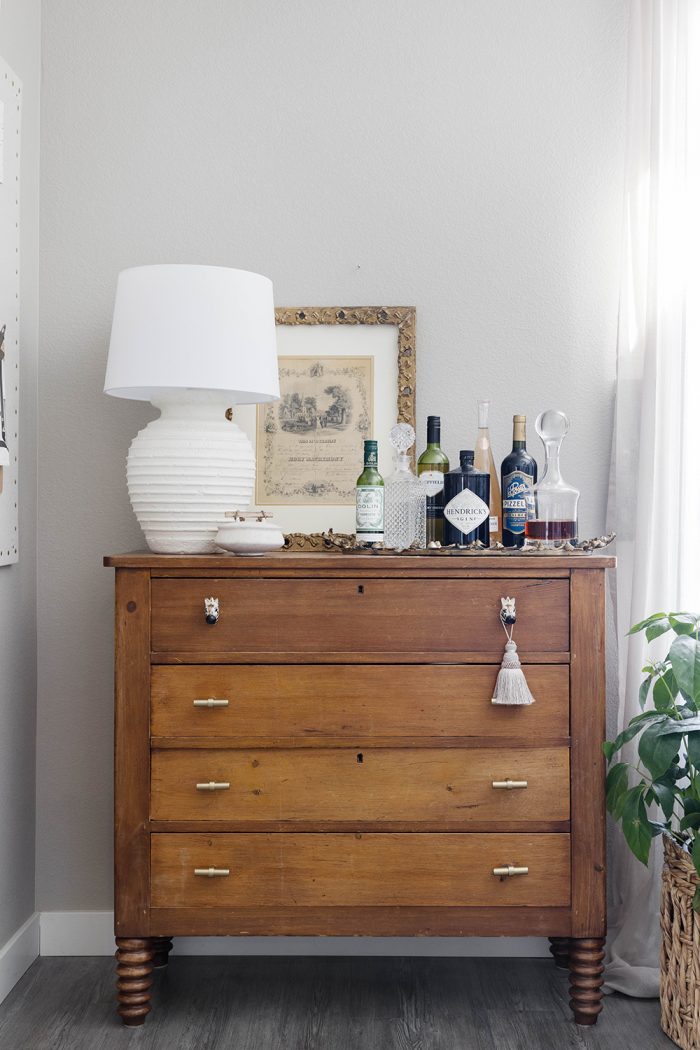
Shopping for true vintage items can be tough if you’re not going through a reputable reseller or a collector. Oftentimes, people don’t know the true value of what they have, and can’t share many details. To ensure you’re getting a quality piece, ask the seller questions about where they sourced it, what era, and how long they’ve had it. Additionally, keep and eye out for:
- Brand names and maker’s marks
- Issues with structural integrity — is it rickety or wobbly?
- Quality of the wood, veneer, laminate, or stone
- Any issues that may need repairing
- Storage conditions — mold, bugs, or rot of any kind may make the piece far less valuable and not worth the investment
5. Follow your heart
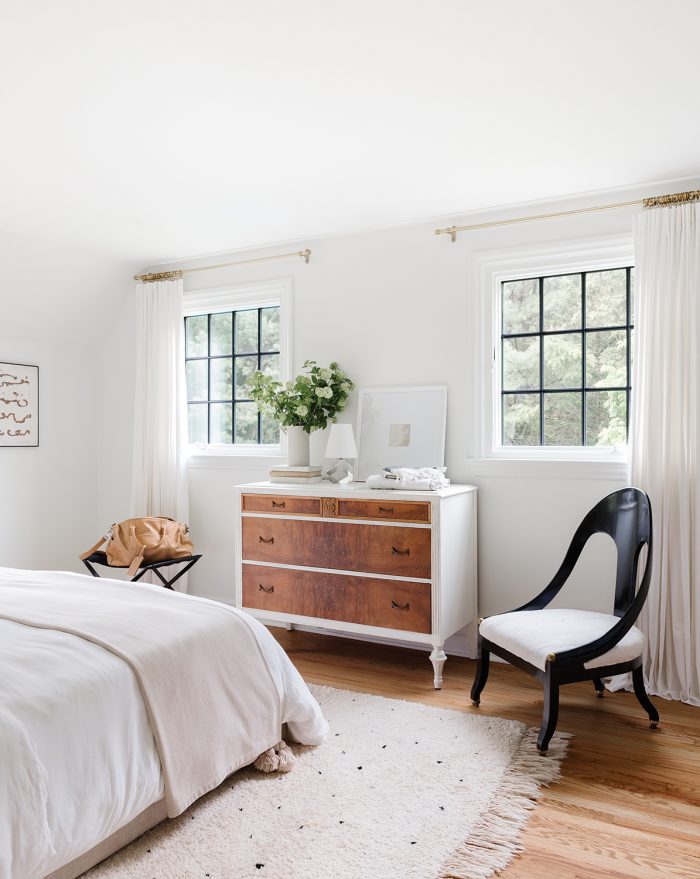
Remember that list of actual needed items we mentioned? Sometimes it’s okay to ignore it entirely if a true hidden gem comes along. The bottom line? Buy what you absolutely love and feel passionate about, whether it’s a 1960s arch floor lamp, a 1980s postmodern marble coffee table, or an art deco-style credenza. It’s sort of like getting dressed — buy what makes you feel good!
6. Stay connected
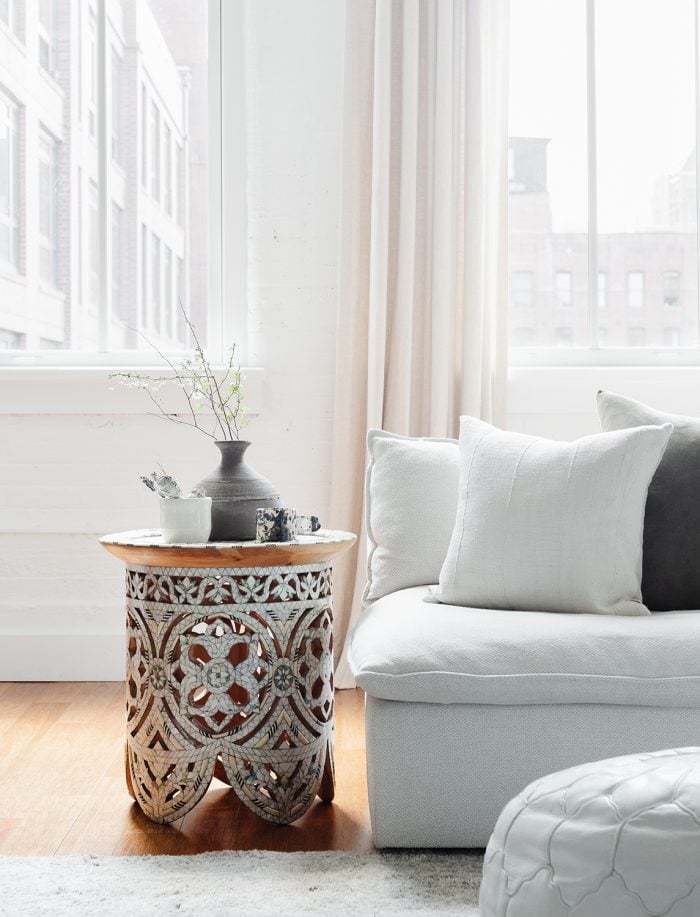
In addition to making friends with shared interests, staying connected to sellers and collectors in the vintage furniture space is an invaluable resource. “If you bought something spectacular from someone, make sure they remember your name and tell them to give you a call if they run into anything else cool in their basement or garage,” notes Kelsey. “You’d be surprised by the gems you can find by just making friends!”
7. Pay attention to descriptions

Important note when shopping vintage furniture in-person but especially online: if the description says “in the style of,” it’s not authentic vintage, and the price should reflect that. “If you’re looking for a quality reproduction for a great price, that description is exactly what you’re looking for,” says Kelsey. “But if you are looking for a genuine vintage item, like an original Eames Lounge Chair, be wary of this particular wording.”
8. Do a quick price comparison
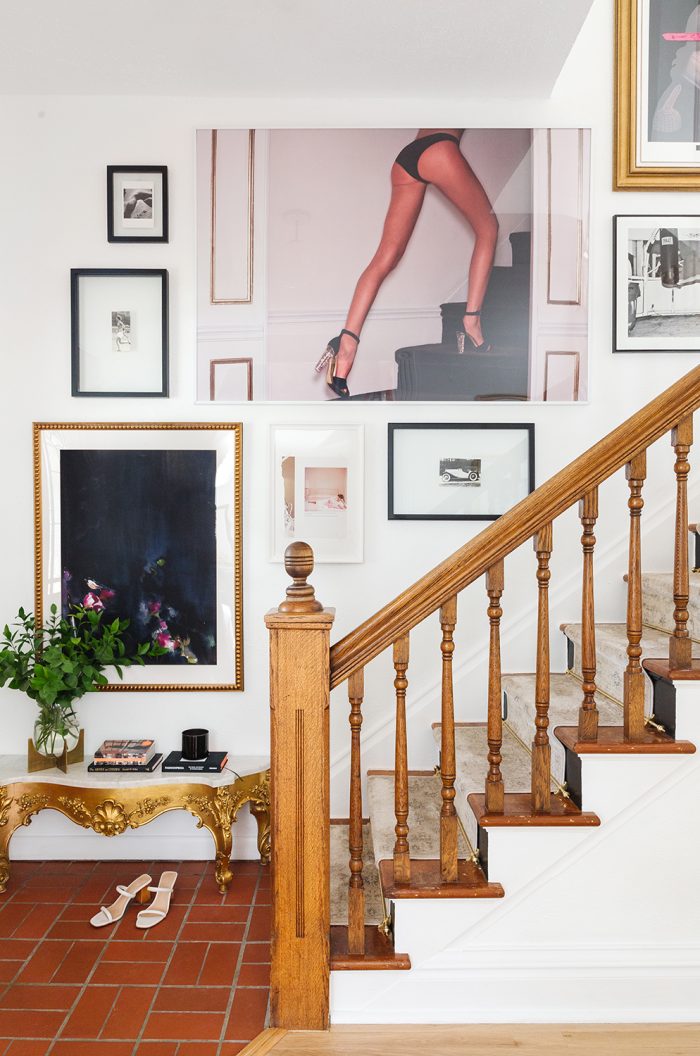
Given all the information above, it’s perfectly acceptable to do a little price comparison or negotiation, depending on the shop. Before cashing out, always do a quick Google search to see what similar items are going for online to make sure you’re not getting a bad deal. “This will also let the seller know that you’ve done your research, and you can negotiate a bit,” adds Kelsey.
Want expert advice on your actual home, straight from an interior designer? Start with our style quiz to work with a design pro one-on-one.

